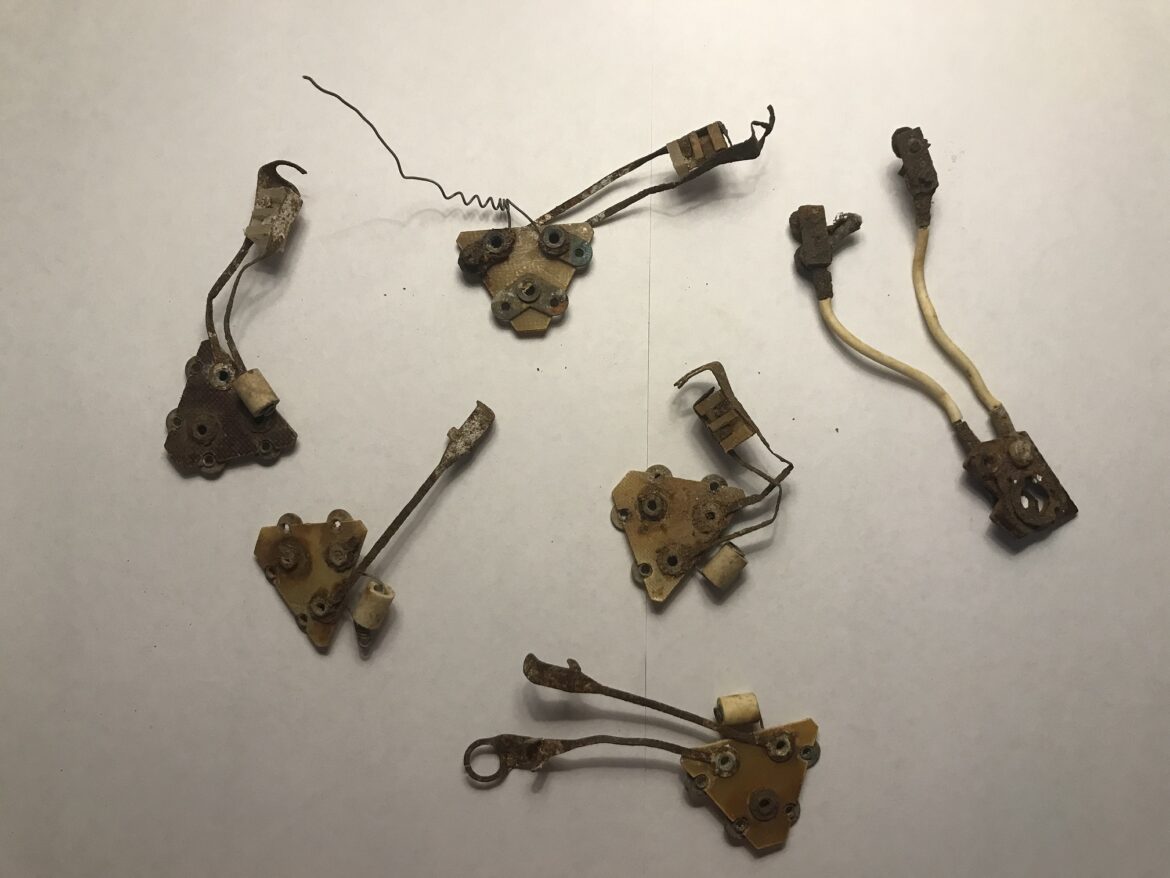A working cell in a barracks in a special regime area: a cramped room with damp walls, dim overhead light. There are several machines in the cell, on which people in respirators work: there is no ventilation here and there is nothing to breathe. People make terminals for electric irons: triangular panels are cut out of textolite on a press, threaded into them, electrical contacts are pressed into the panel. Manually assemble a circuit from conductive elements. Then their products will go to the Lysvensky turbogenerator plant, which, along with turbogenerators, also produces consumer goods – by the forces of the convict.
Clamps, produced in the 70-80s on the territory of the Perm-35 and Perm-36, were found in the special regime zone already in those years when the camp was closed, and a team of enthusiasts explored its territory in order to open here is a public museum of the history of political repressions. And these small objects, hardly distinguishable without a magnifying glass, became a large and incriminating evidence of the inhuman conditions in which political prisoners were kept and worked.
“Everyone was given a job that was more difficult for him: if he had poor eyesight, then they were given something that needed to be well examined – some small details; those who have a sore hand – they were forced to work with this hand all the time,” recalled Oles Shevchenko, a Ukrainian journalist and human rights activist who ended up in Perm-36 in 1980 for publishing the “Ukrainsky Vestnik” and distributing other “materials of anti-Soviet content” . His job was to take a piece of bronze with pliers and press it against a spinning drill that cut the threads. Eight hours of daily monotonous labor with the same hand. According to Shevchenko, every morning his right hand was larger than his left. His compatriot, Vasily Ovsienko, worked on assembling the electric cord of the future iron with a contact socket: “You take this screw, you get into this washer, you still have a screwdriver in your hand, and you need to bait here, you need to do so many movements. And then, when I did the whole bundle, several bundles … I threw it here and take the next one. It wasn’t very difficult for me, but I had to work hard to get it done. It was very difficult for some people… There were old people who could not see well.”
Ovsienko recalls how the humiliating and exhausting camp labor was given to Gunars Astra, a human rights activist and fighter against the Soviet regime in Latvia: “Astra, such a huge human being, he has such a loose body that his fingers were always bloody, always wounded. Those big fingers, those little cogs, they were also prickly, and his fingers were always wounded. He suffered a lot from it.”
The production rates, as the former inmates say, were monstrous, so no one could cope with the plan. They were set by the factory raters and corresponded to the factory ones – that is, those that were performed by free people in more suitable conditions for this. From time to time the rates have been raised. For example, in an assembly operation: using a semi-automatic screwdriver to turn three or four three-millimeter screws, two of which still have a cord attached – the prisoners had to produce more than 700 parts per day, that is, one and a half parts per minute! Failure to comply with the norms was the most universal reason for intra-camp repressions: deprivation of a “stall”, a date, and placement in a punishment cell.
Small clamps, the production of which imprisoned the eyesight and undermined their health, the prisoners of the Perm political zone, are one of the few well-preserved exhibits of the Perm-36 public museum. If they had remained at the disposal of the current administration of the museum complex, perhaps they would have met the same fate as many other objects of the fund: they would actually lie on the ground again, rapidly collapsing under the influence of humidity and temperature changes. But while the artifacts are alive, their history is alive – our memory of times that should not be repeated is also alive.


